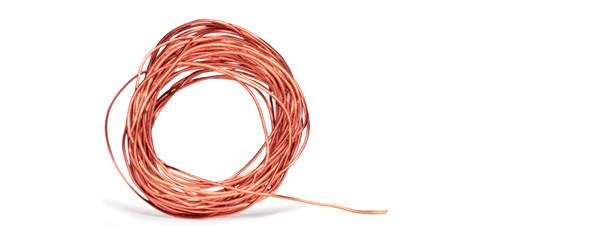Better understanding neurodegenerative diseases
UOW scientists are at the forefront of an exciting new field of research that aims to use metals, such as copper, iron and zinc, to diagnose and treat disease.
Associate Professor Anthony Dosseto, from UOW’s School of Earth and Environmental Sciences, explained the emerging field of isotope biochemistry, which applies methods that have been developed in Earth sciences.
“In short, we can use minute variations in the ratio of naturally-occurring isotopes, a technique developed for Earth sciences, to better understand a wide range of pathologies – from cancer to neurodegenerative diseases.”
Isotopes are variants of a particular chemical element that have a different number of neutrons, for instance copper-65 (65Cu) and copper-63 (63Cu). Light isotopes (in this example, 63Cu) prefer chemical bonds involving sulfur, whereas heavy isotopes (65Cu) prefer bonds with nitrogen and oxygen.
“By measuring the ratio between two isotopes (65Cu/63Cu) we can better understand the metabolism of metals (here, copper) in living organisms, and how changes in this metabolism is linked to neurodegenerative diseases,” Professor Dosseto said.
A handful of researchers around the world have already used the technique to forecast changes in the health of breast cancer patients.
Metals, including copper, zinc and iron, are required by the body for healthy function of the immune and hormone systems as well as major organs such as the skin, liver and brain.
However, it’s believed that the misregulation of particular metals, like copper, in the brain is a potential factor in neurodegenerative disorders, but how, why, and to what extent, is still not well understood.
Professor Dosseto is leading an interdisciplinary project at UOW to investigate the role of copper in Motor Neurone Disease and other neurodegenerative diseases, such as Alzheimer’s.
“There are two exciting aspects to this: firstly, there’s the potential to help us understand the role of metals in the development and evolution of neurodegenerative diseases.”
Professor Dosseto and his team, which includes chemist Associate Professor Di Jolley, biomedical researchers Associate Professor Heath Ecroyd and Dr Justin Yerbury from the Illawarra Health and Medical Research Institute, and PhD student Gabriel Enge, are interested in examining data on how the role of metals differs in healthy subjects, compared to patients with Motor Neurone Disease.
In fact, Gabriel has already started examining copper in blood samples from mice and comparing them to healthy blood samples, with encouraging results.
Professor Dosseto said another exciting aspect to the project is investigating whether we can use metal isotopes as biomarkers to develop diagnostic tests.
“That is, can I take a blood sample, and say this person is likely to develop Alzheimer’s based on the ratio of metal isotopes in their blood?
“A definitive diagnostic test is still a long, long way away, but we’re at the birth of a discipline and at UOW we’re in a great position to be part of its evolution.”
The field of isotope biochemistry, which emerged just a few years ago, utilises the same techniques used in Earth sciences to understand a wide range of geological processes, from the origin of the Earth to climate change during the last ten thousand years.
Just last year, Professor Dosseto, founder of the Wollongong Isotope Geochronology Laboratory, used similar techniques to study the role of climate change over the past 30,000 years on carbon dioxide consumption through mineral dissolution in the Himalayas.
“For geochemists like me looking into the biomedical field, it’s incredibly exciting because everything is new – it’s discovering another scientific world, one that opens up the possibility of contributing to a new field of research.”
“This new field of research is very exciting because it has a huge potential to help people. Neurodegenerative diseases, diseases related to ageing like Alzheimer’s and dementia, are the new cancer, because we’re living longer and are more susceptible to these kinds of diseases.
“Isotope geochemistry is part of the toolbox that we can hopefully use to solve these issues.”
(Source: University of Wollongong)
Dates
Tags
Created by:

 Login
Login














